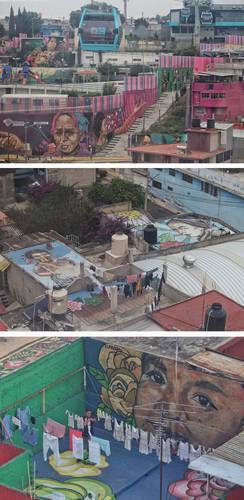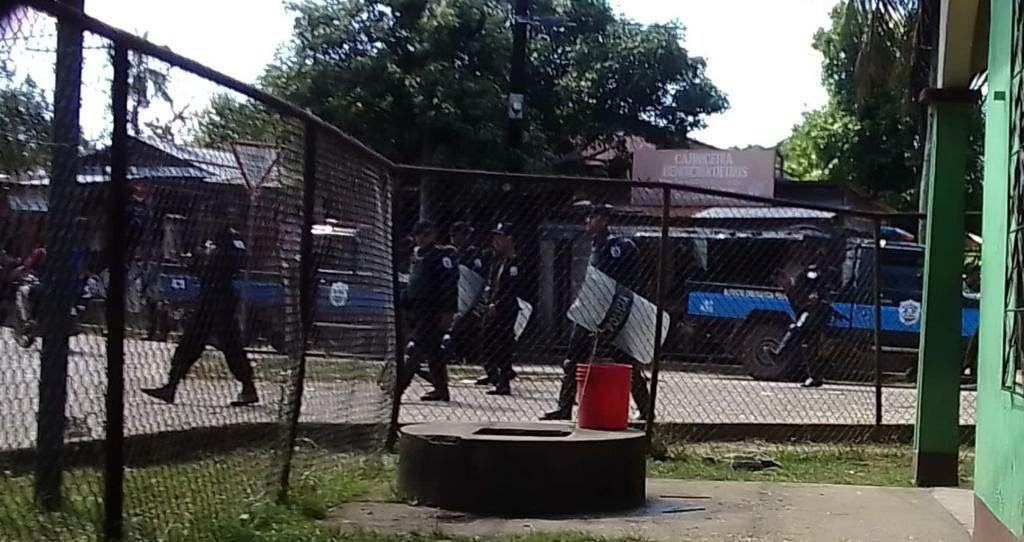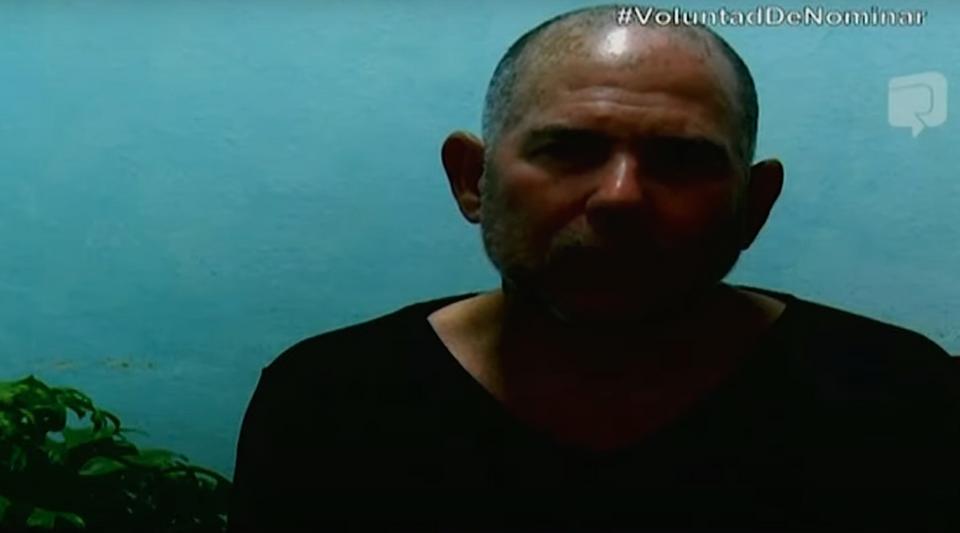Israel Campos Mondragon
Newspaper La Jornada
Friday, November 11, 2022, p. 4
From the heights of the Iztapalapa Cablebus you can see the murals on the roofs of some houses; the fear of looking down grows as the cabins advance, but disappears when the first painting is noticed. You have an approximate time of five minutes to contemplate these works, which is what is done from one station to another.
The booths are transparent, they fit 10 people seated and you have a 360-degree view of that area of Mexico City.
Throughout more than 10 kilometers that comprise the seven stations that make up line 2 of this electric transport, you can see, among water tanks and clotheslines, drawings of community characters, as well as pre-Hispanic figures.
Among them stand out that of a Pakal, which was painted on the floor and part of the wall of another house; pets, such as a giant cat that lives with an abandoned chair, and clotheslines; There are also messages like No to discrimination
in addition to turtles and marine animals standing out among television antennas, gas tanks and hanging clothes.
The stations that make up the Cablebús are Constitución de 1917, Quetzalcóatl, Torres Buenavista, Minas, Lomas La Estancia, San Miguel Teotongo and Santa Marta. The tour to observe the murals can start at the Constitución de 1917 station on line 8 or Santa Marta on line A of the Metro, both connections with the Cablebús.
The cabins look like an amusement park ride, they never stop, they keep moving and you have to approach like that, it’s not complicated, but it’s weird for those who aren’t used to it.
Passengers go up and down the Sierra de Santa Catarina with cakes, supplies for their pantry and backpacks, but you can also walk, go through all the stations to appreciate the murals and get to know the eastern part of the city.
The paintings are part of the Iztapalapa mural project: The largest open gallery in Latin America, which aims to change the view of the streets of that area, consists of 100 pieces with different themes, among which women’s empowerment, traditional trades and migration, painted a year ago by 40 urban artists.
▲ Appearance of the murals painted on the roofs of houses in Iztapalapa that can be seen on the route through the cable car stations, from Constitución de 1917 to Santa Martha.Photo Marco Pelaez
Another aspect that can be seen from the Cablebus is the plane converted into a digital library called Volando a la Utopía, which is located in the Utopia Quetzalcóatl (Transformation and Organization Units for Inclusion and Social Harmony that was installed by the mayor’s office in different neighborhoods), in the Quetzalcóatl Urban Development neighborhood.
On Fridays you can visit a tianguis that is installed on the outskirts of the Xalpa station, where you can find fruits and vegetables, clothes, as well as refreshing drinks.
On weekends it is possible to taste some carnitas or barbecue outside the same station or, if you prefer, walk to the neighborhood market, which is very close. There are also improvised chelerías in the patios of some houses, where the music is combined with that of a music school that is in front.
A neighbor whose roof was painted is Mrs. Ofelia Camacho and lives with her mother-in-law, Leticia Contreras, on Camilo Torres street, Xalpa neighborhood. She shared to this medium that people from the mayor’s office approached her to propose painting the roof of her house, where they captured a couple of dragonflies that can be seen from above.
He said that the time it took to make the mural was two days, but he had no contact with the artists, everything was put by the government
he added.
Also, think that that resource could be used for other more necessary issues, such as drainage
.
The Cablebús operates from Monday to Friday from 5 a.m. to 11 p.m., Saturdays from 6 a.m. to 11 p.m. and Sundays from 7 a.m. to 11 p.m. The cost of the ticket is seven pesos per person and you can use the integral mobility card.
Since its inauguration, Cablebús line 2 has been recognized with the Guinness record for being the longest urban transport cable car in the world, as it has 305 cabins and 59 towers. This service mobilizes more than 70 thousand people a day, mainly from 20 neighborhoods of the Iztapalapa mayor’s office.















